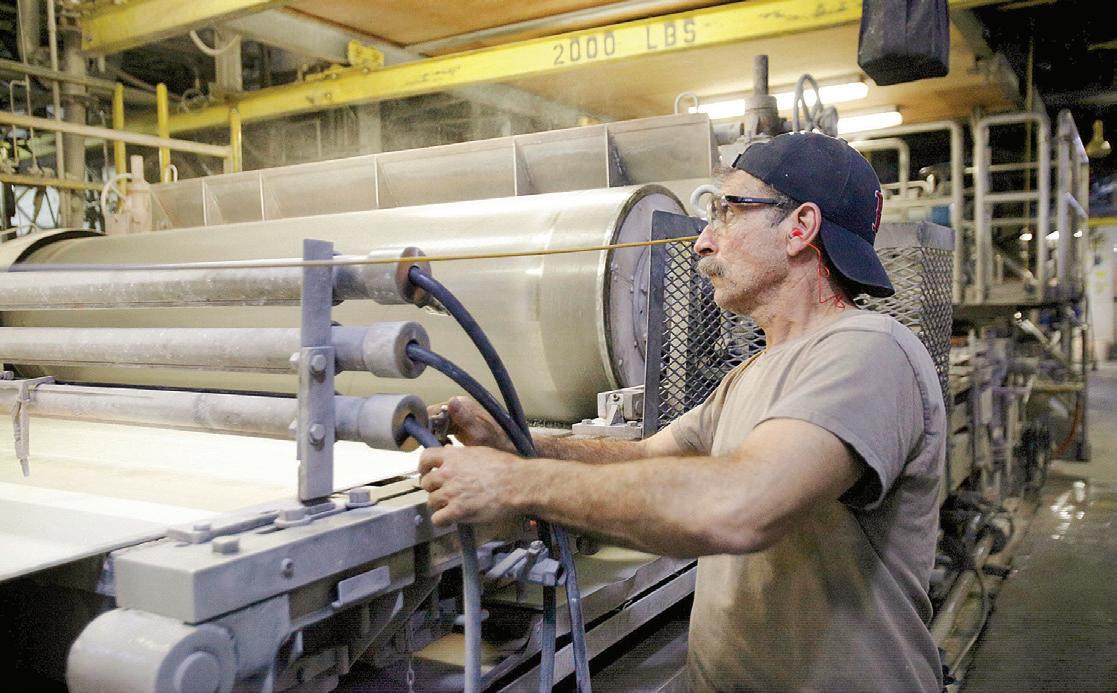
3 minute read
New report provides intriguing economic data
LEE — If you’re looking for clues about the local economy going forward, a report compiled by the Berkshire Regional Planning Commission provides some interesting insights.
The 2023-2027 Comprehensive Economic Development Strategy that the Berkshire Regional Planning Commission recently submitted to the federal government contains a raft of interesting data about the economy and some sensible prescriptions for fostering business development in the Berkshires.
The document identifies five strategies to guide economic development in the region. Two strategies specifically focus on the needs of the business community — creating a “future-ready workforce” through education, training, upskilling, and career versatility; and ensuring a strong business environment through access to capital, technical assistance, and opportunities for expansion.
But the three other strategies are also of equal interest to local businesses. They include improving infrastructure in the areas of communications, transportation, and utilities; fostering the well-being of all residents by ensuring affordable, equitable access to food, housing, education and health care; and equipping our communities to serve their constituents, steward resources, and managing government effectively. All five strategies are interdependent and need to be advanced in order to retain and grow our existing businesses, while also attracting new ones to the Berkshires.
The report is colored throughout by the COVID-19 pandemic and the challenge of building a resilient economy capable of surviving similar catastrophes in the future. The COVID crisis was a mixed bag for the Berkshires as economic output and employment dropped, but the county gained population from people leaving large cities to work remotely.
The strategy offers a wide range of recommendations to build a resilient economy. A few particularly caught my eye:
• Increase availability and range of vocational training regionwide. Collaboration between the business community and our educational institutions will be important to align the career technical education tracks with the occupations projected to grow.
• Increase educational programs at all grade levels in STEM disciplines. Starting early to get students comfortable with STEM disciplines will benefit students and future employers.
• Connect more students with internships and career exploration opportunities. Internships are an excellent way to provide local students with work experiences to inform their career choices, but they are also a way to introduce the Berkshires to college students from outside the region.
• Support wraparound services to ensure full participation in the workforce. The “cliff effect,” which occurs when an employee’s wage increase results in a poorer financial situation for her or his family, needs to addressed. We also need to be creative in helping overcome the other barriers to full participation in the workforce, including finding quality child care, reliable and consistent transportation options and housing stability.

• Increase access to affordable, high quality physical and mental health care. Since the pandemic, employers have seen more employee mental health conditions that are resulting in missed time from work. Many of these employees are unable to get the necessary care due to a shortage of mental health professionals.
• Increase the number of businesses with state-level Women or Minority-Owned Business Enterprise (WMBE) owned certifications, supporting application and renewal processes, and expanding them to include disadvantaged, veteran and LGBTQ-owned. This is a welcome goal for those of us who are committed to diversifying our supply base, while also buying goods and services locally when possible.
• Advocate for increased funding to support more robust services from the Berkshire Regional Transit Authority, including micro-transit implementation. Connecting potential employees with job openings given our unique geography and demographics will require creative solutions and public-private partnerships.
• Continue technical assistance programs aimed at small-and medium-sized businesses. Business owners need a “one-stop-shop” approach to the services that are available to help them build and grow their businesses.
• Support industry diversification, focusing on promising growth and export-oriented industries.
The strategy notes that Berkshire County is home to 33 advanced manufacturing companies that primarily make material goods like plastics, rubber, fabricated metal and paper. Most of these businesses generate revenue outside the county, the state, and even outside of the country.
Manufacturing employs more than 3,400 Berkshire residents and is the county’s fifth-largest job sector behind health care/social assistance, retail, educational services and accommodation/ food service. The average salary for local manufacturing employees was $55,640 in 2021. Having a solid manufacturing base is important for achieving the goals outlined in this report.
The 2023-2027 Comprehensive Economic Development Strategy underscores the complexity of building and maintaining a vibrant economy in a county that in many ways is unique in Massachusetts. The recipe must support entrepreneurs and business owners; establish solid training and education processes; modernize infrastructure from roads and bridges to broadband internet; and ensure that government maintains a fair efficient process for regulation.
It’s a tall order but the new five-year plan lays out an encouraging road map.






